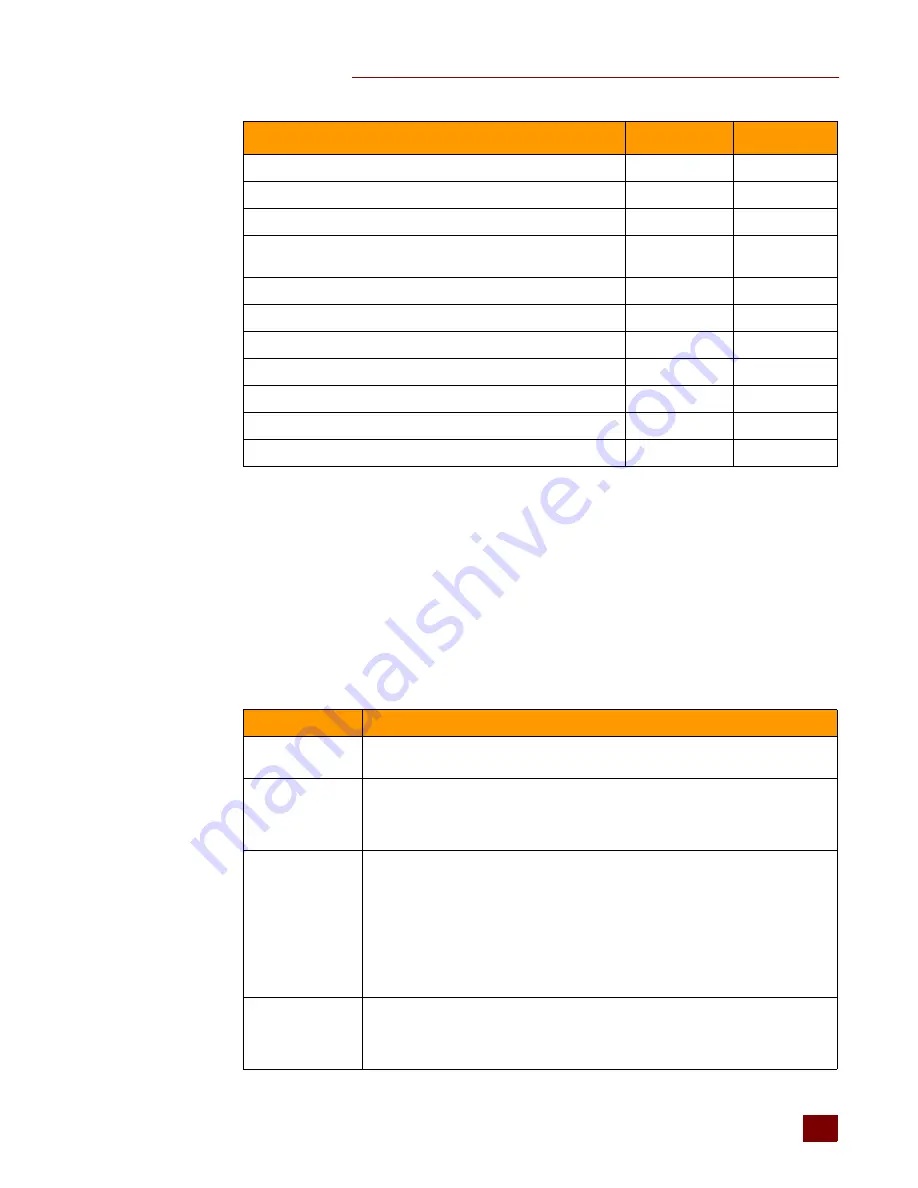
CHAPTER 3: SYSTEM ARCHITECTURE
SNAP PAC Brains User’s Guide
19
19
Feature Descriptions
See the feature table on
. For additional information, including configuration, see the
PAC
Manager User’s Guide
.
SNMP (network management)
5
n
n
FTP server, file system
n
n
Email (SMTP client)
n
n
Scratch Pad area for peer-to-peer data
(bits, floats, integers, and strings)
n
n
Digital events
1
, Alarm events, Serial events, and Timed events
1
n
n
Event messaging
n
n
UDP Streaming
n
n
Data logging in the brain
n
n
Security (IP filtering, port access)
n
n
Realtime clock (RTC)
n
n
I/O point data mirroring and memory map copying
n
n
1 Four-channel digital modules only; not available on high-density digital modules.
2 Requires a SNAP quadrature input module (SNAP-IDC5Q).
3 Available when used with PAC Control Professional and a SNAP PAC controller.
4 Requires a SNAP analog TPO module (SNAP-AOD-29).
5 Currently not available on analog modules with more than 4 points.
Feature
Description
States
(Digital input and output)—A digital point is either on or off. You can read the current
state of a digital input or write an on/off state to a digital output.
Latches
(Digital input)—When the value of a digital input point changes from off to on, an
on-latch is automatically set. While the value of the point may return to off, the on-latch
remains set, as a record of the change, until you clear it. Similarly, an off-latch is set
when the value of a digital point changes from on to off, and it remains set until cleared.
Counters
(Digital input)—A counter keeps track of the number of times a digital input changes
from off to on. The count accumulates until it reaches the maximum count available in
the brain or until you reset the counter to zero. For example, to count the number of wid-
gets produced per shift, you would clear the counter at the start of each shift and read it
at the end of each shift.
SNAP-PAC-EB1 brains offer high-speed counting (up to 20 KHz) on 4-channel modules;
the speed of the counter depends upon the speed of the module used.
Both brains offer low-speed counting (about 50 Hz) on high-density modules; counting
is done in the module.
Quadrature
counters
(Digital input)—A quadrature counter requires a SNAP quadrature input module, which
is attached to the encoder device. The module sends a pulse to the brain upon each
change in quadrature state, and the brain counts the pulses and keeps track of the
direction and rotation.
FEATURE
SNAP-PAC-EB1
SNAP-PAC-EB2
Содержание SNAP-PAC-EB1
Страница 26: ...SNAP PAC BRAIN COMPARISON CHART SNAP PAC Brains User s Guide 22...
Страница 40: ...SNAP PAC Brains User s Guide 36...
















































